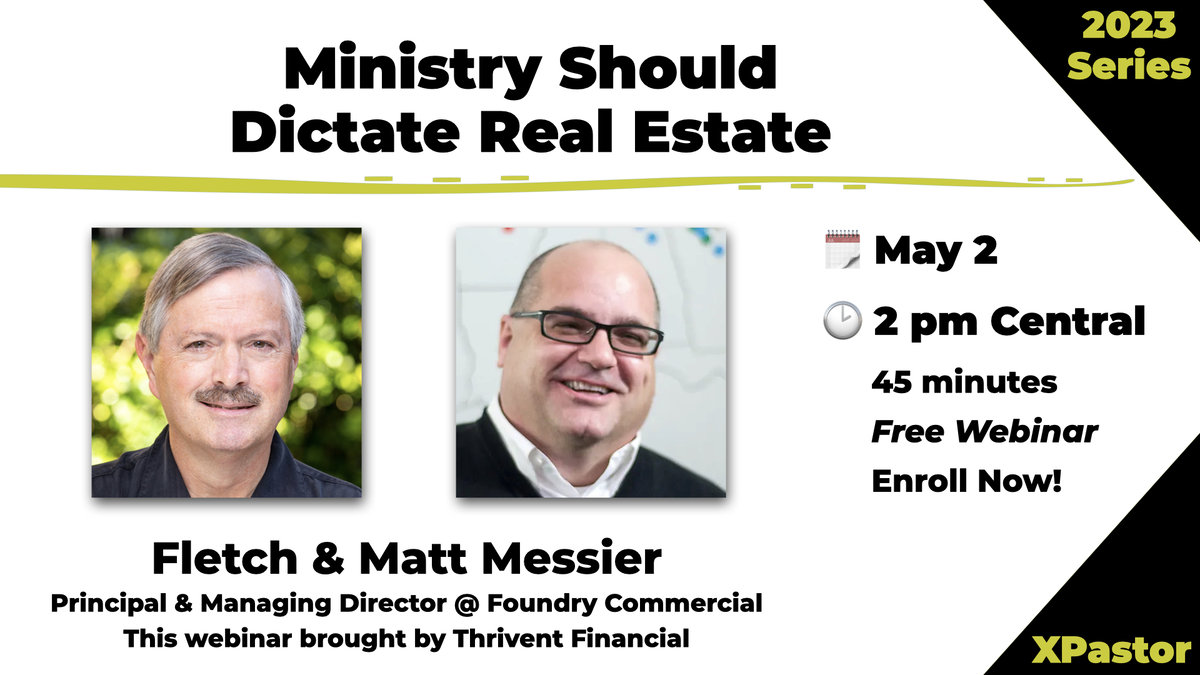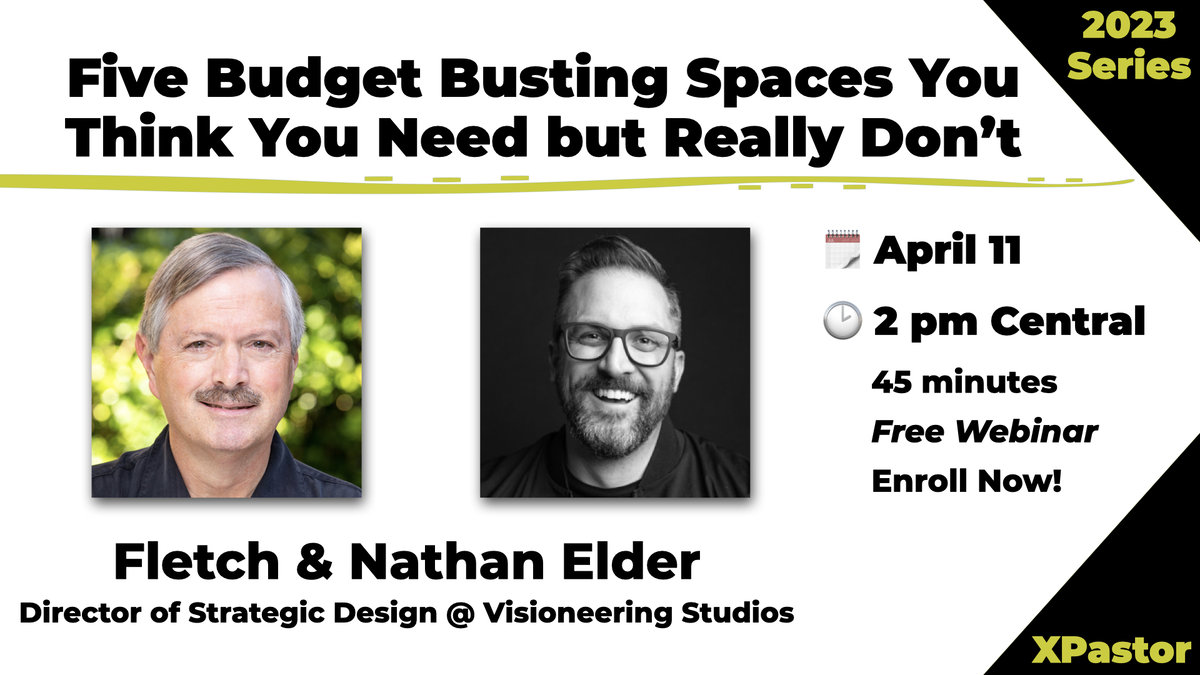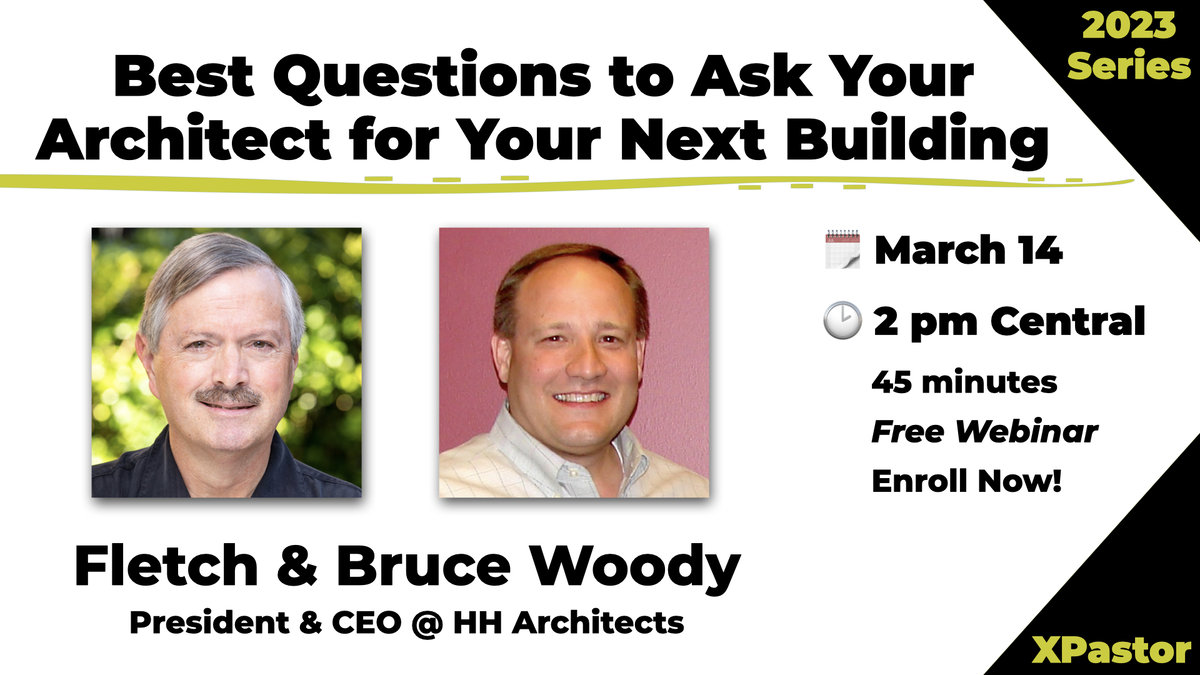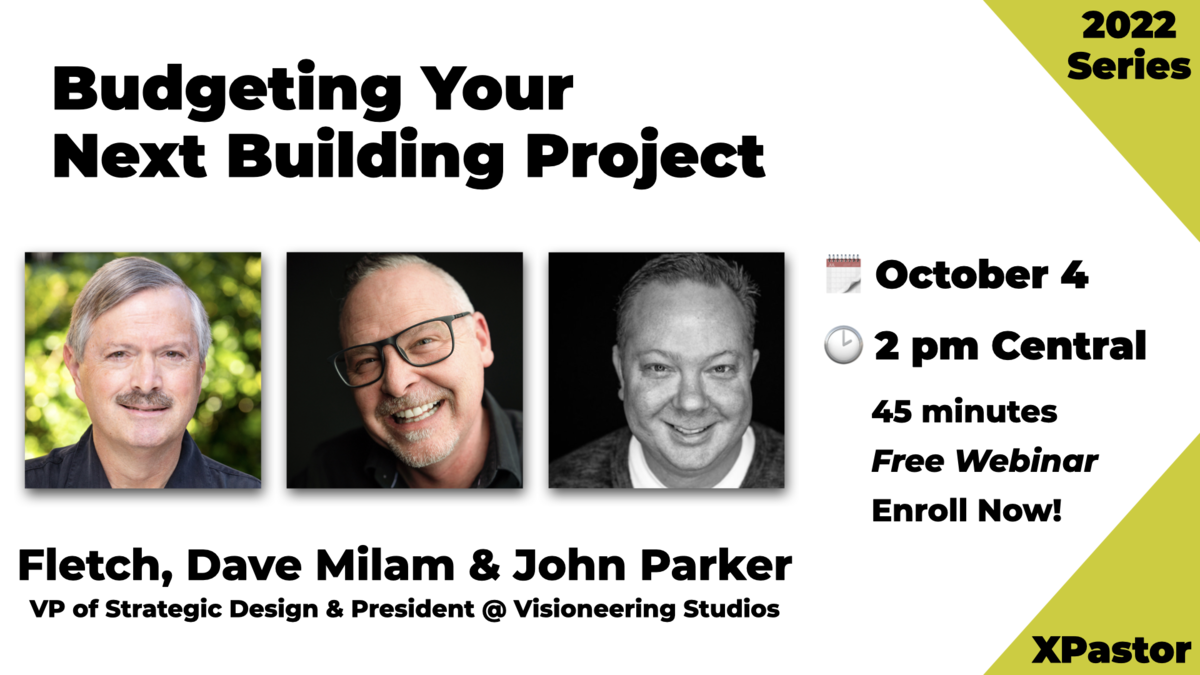Bob Feitl was an Architect and a Project Manager before he became an Executive Pastor. When he attended the XP-Seminar, he would often lead workshops regarding how to have a successful building project at your church. Below provides a printout of a Q&A session from one of those workshops.
Question 1: If we follow all the advice we have heard to this point in the conference, then building should be the easy part of the process?
I have lots of experience and too often the project comes in seven stages:
- Euphoria
- Growing discomfort
- Dissatisfaction
- Disaster
- Search for the guilty
- Punishment of the innocent
- Recognition for those not involved
Question 2: Can this be avoided?
You can avoid Stages 2 through 6! “Euphoria” and “Recognition of those not involved” is always there!
Question 3: What is the single most important thing to know when building? Is there one thing above all else?
Make the designer and builder a team—not adversaries.
- Building is the easy part—dig a hole and pour in the concrete
- People are the difficult part!
Separation of the two positions of architect and contractor is relatively new, historically. That has only happened during the last couple hundred years.
- Specialization into two camps resulted in significant advantages and significant disadvantages. Better designers and better builders and much more sophisticated buildings.
- But, it also resulted in separate profit centers with different business objectives requiring the assignment of liability—resulting in an adversarial relationship.
- Think of the building process as a three legged stool: The project is the seat, the legs—of equal length—are the client, designer and builder. The braces between the legs is the communication.
- Today, clients must force the designer and builder to be a team by becoming the team leader and bringing the builder into the design process at the beginning.
Question 4: How do you bring the contractor into the design process when he isn’t hired yet?
There are three primary routes to choose when building:
- Architect/General Contractor
- Design/Build Firm
- Architect/Construction Management
Basic pros and cons of each:
- If using an Architect/General Contractor
- This is the most common and understood method. It is assumed to give the most competitive price, but he shows up after the design is completely done.
- Hire the best one you know for design phase services and bid to others at construction.
- If using a Design/Build Firm
- This method is simple to manage, gives GMP and reduces client coordination. But, the down side is, loss of control
- Use only on small and simple projects
- If using Architect/Construction Management
- You will pay a set fee and have a higher level of control over subcontractors.
- Select the Construction Management with the same care you use in selecting the architect
Question 5: How do you choose the right contractor?
Create a short list of pre-qualified bidders.
Question 6: How do you pre-qualify a contractor?
Produce a Request For Proposal (RFP) and send it out to every firm anyone recommends. The RFP explains the project scope and goals and asks for the validation of key selection criteria. The selection criteria includes:
- Experience on similar sizes and types of projects
- Financial capacity
- Projected workload
- Staffing proposed for your project
- Evaluate character of companies’ principles (ask tough questions that don’t have right or wrong answers). Look for passion and integrity
- Price is not the best criteria
Question 7: How should a church handle a large project? What kind of organizational structure? Who should be involved?
- In a church building project, often the church itself is the biggest problem:
- Lacks building experience
- Has a volunteer organizational structure for decision making
- Has hundreds or thousands of “stake holders”
- The communication system is usually inadequate
- Broad-based input is essential. A single source of “output” (communication to the design and construction team) is also essential.
- Church “Owner” representative must be:
- A great leader
- A wise manager
- A people person
- Have full authority to make critical decisions in a timely way
- Have tons of time
- Having broad-based building experience is a real plus BUT NOT essential … don’t use your local plumber or carpenter
Question 8: Construction projects typically run over budget, in spite of all the efforts to control costs. Is it realistic to stick to a budget? If so, how?
Absolutely!!
- The price you get from the estimate of the construction is not the cost you will spend. Budget with that knowledge.
- What is the difference between a budget and a construction estimate?
- Your budget from day one must be significantly greater than your construction estimate.
- Three components of PROJECT BUDGET
- Construction costs
- Design Costs 10% to 20%
- Architect
- Interior designer
- Engineers … HVAC, plumbing, electrical, structural
- A/V and stage lighting
- Computer and technology
- Acoustic designer
- Traffic engineer
- Program of requirements
- Pre-Construction fees from the builder
- Landscaping
- Owner Costs 15% to 30%
- Furniture and furnishings: anything not built-in by the contractor that you need in order to make every room functional
- Insurance (builders risk)
- Decorating costs
- Fees:
- Accounting
- Legal
- City/county fees and plan review
- Building permit
- Financing costs
- Fundraising fees and costs
- Data and telecom systems
- New cleaning equipment
- Signs
- Dedication or opening event costs
- Communication costs, other special event costs
- Land
Hard costs (building) + Soft costs (design and owner costs) 25%-50% = Total Project Cost
Always base your budget on the total project cost.
Question 9: How can you budget for something when you don’t know what it will be and don’t have a contractor estimate?
Build your budget around the program of requirements or vice versa … before the design begins. You should have three contingencies built into your CONSTRUCTION BUDGET:
- Design contingency—4%-10%
- Add to the construction budget at the pre-design stage AFTER the construction budget is set by the consultants. Separate line item.
- This WILL be used to refine design as it develops
- “Oh! Decorative stone on the sides too?”
- “Conduit for data drops how often?”
- “Built-in cabinets in EVERY nursery room on the entire wall?”
- “Why would you want a dimmer on THOSE lights?”
- Construction contingency—3%-5%
- Unknown soil conditions
- Unexpected site conditions during construction
- Minor errors and omissions in construction documents
- Owner’s contingency—3%-5%
- Everything you forgot during budgeting
- Everything you want to change as you see it get built
- Everything you want to add back that you took out to save money
Hard Costs Budget = Consultant’s best estimate of construction costs + Design contingency 4%-10% + Construction contingency 3%-5% + Owner’s contingency 3%-5%
HARD COST = Construction Estimate + 10%-20%










